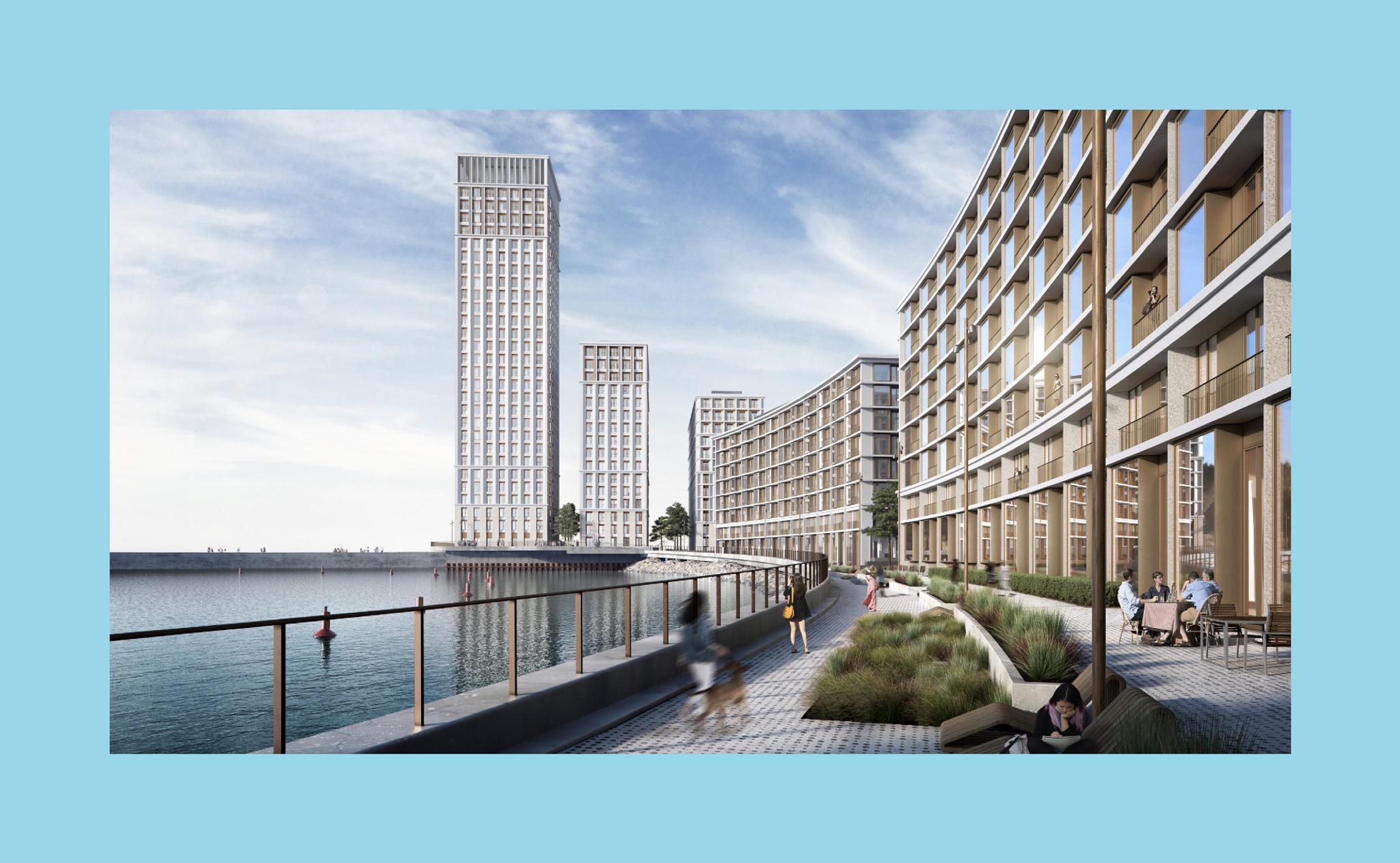Housing design is finally improving in England – here’s why

This scheme at Brighton Marina was rejected by the Planning Inspector who criticised it as “wanting for discipline”
In 2019, three quarters of new housing developments in England were mediocre or poor when assessed against a broad basket of urban design considerations. That’s what the Place Alliance – a campaign based at The Bartlett School of Planning which advocates for place quality – revealed in our 2019 report ‘A Housing Design Audit for England’. Given this finding, why aren't more developments simply rejected by the planning system?
As we revealed in our ‘Councillors’ Attitudes to Residential Design’ report (2019), the national pressure to deliver new housing has been seen by local politicians as trumping design quality. Local planning authorities in England have found themselves in the position of needing to balance the risk of giving consent to poorly designed development proposals, or rejecting them only to lose the inevitable planning appeal before a nationally appointed Planning Inspector.
More often than not, local planning authorities have opted to not fight the battle, and simply give consent to poor and mediocre housing schemes. These schemes subsequently further raise local opposition against new development in a manner that seems self-defeating when the national objective is to build more homes.
Following campaigning from the Place Alliance and others, a revised National Planning Policy Framework (NPPF) was published in July 2021 containing new and unambiguous words on design: “Development that is not well designed should be refused.” The statement stands in sharp contrast to earlier wording which simply required that “permission should be refused for development of poor design”.
This means that the test is now the achievement of ‘good design’ and not just the avoidance of ‘bad design’. In other words, the dominance of ‘mediocre’ housing design in England – as revealed by ‘A Housing Design Audit for England’ – is no longer considered good enough.
But has this unambiguous policy wording made a difference? Evidence in our latest report, ‘Appealing Design’ (March 2022), suggests it has. In order to assess design-related planning appeals, we examined all appeals reported in a weekly ‘Decisions Digest’ newsletter (produced by the Royal Town Planning Institute’s magazine, The Planner). Around 400 appeals are written up annually in this source, or around half of major planning applications in England, ensuring that a representative sample of appeals could be analysed.
From this source it was possible to identify 32 appeals heard in 2021 where design was the grounds for refusal; 12 in the first half of the year, prior to the change of policy, and 20 following the change. In each case, the Inspector’s decision letter was examined as well as application documents lodged on the planning portal of each local authority. Together these gave a good insight to the decision-making process.
Analysis of the pre-July 2021 appeal decisions supported the evidence from councillors that design quality was sometimes prioritised in decisions made by the Planning Inspectorate, but was often considered expendable. The result was a lottery that, understandably, made local planning authorities reluctant to reject developments on design grounds. Some decisions came down in favour of supporting local character and living conditions, but a majority clearly prioritised housing numbers despite the poor quality of design.
However, analysing the post-July 2021 cases, it was apparent that a marked shift in the likelihood of local authorities successfully defending design-based appeals had occurred. The shift was particularly apparent in the arguments used by Inspectors who seemed to have been liberated to consider design on equal terms with other factors.
Comparing the decisions made before the revised NPPF to those after, the odds in favour of planning authorities winning cases on design grounds had shifted from just 5:7 (against) to 13:7 (in favour). Extrapolating to account for the shorter period covered by the research after July 2021, the success rate was three times better than before.
This research can be seen as evidence of the vital importance of planning’s regulatory function, which – when working well – prevents untold damage to England’s cities, towns and villages. This unsung and often invisible function (because rejected schemes do not get built) deserves greater celebration.
Less positively, ‘A Housing Design Audit for England’ had also demonstrated poorer design outcomes outside the South-East, while our report from July 2021, ‘The Design Deficit’, showed low levels of urban design capacity in these regions. The appeals data confirmed these regional disparities; findings that have significant ‘levelling up’ implications.
For decades, local planning authorities up and down the country have been reluctant to refuse poorly designed residential and other developments on design grounds. Based on our analysis, nationally the tide has turned on design quality and it is time for planning authorities to stand up against poor and mediocre housing design locally, wherever and whenever it is proposed.
Properly done, the consequence of standing up to bad design is unlikely to be negative and, over time, can help to build a local culture whereby design quality becomes the expectation. Surely this is the minimum that we should expect.



